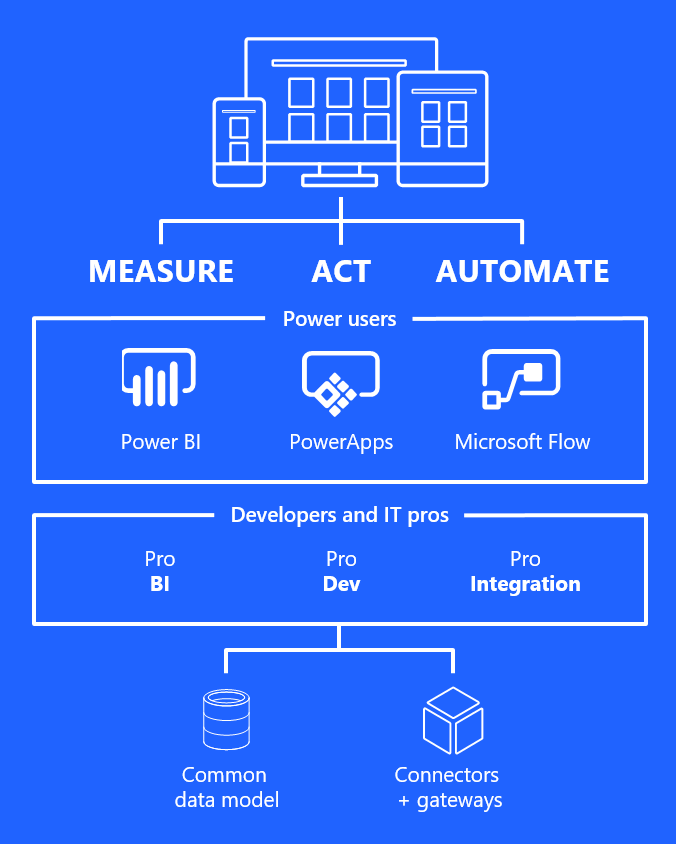Microsoft Flow and the Microsoft Common Data Model
Today we are excited to announce the public preview of the Microsoft Common Data Model integrated in Microsoft Flow. Your flows can already connect to over 40 different services, but sometimes you want to capture new data that you're not already storing somewhere, or, you have a process that needs to store some information independent of the data sources it is using.
The Microsoft Common Data Model is an out-of-box business database for storing and managing business entities. The preview is available today as a first class business database for your flows, with more features rolled out incrementally. Today it provides not only standard entities, but also allows you to build custom entities either extending standard entities or adding new entities that can relate to standard entities. With the Common Data Model, enterprises can improve operational efficiency with a unified view of business data. For example, the Common Data Model is also integrated directly into Microsoft PowerApps, and PowerApps makes it easy to build views and applications on top of the data that you put in with Microsoft Flow.

You can learn more about the Common Data Model here. To get an idea of how to start with the Common Data Model, you can see the list of templates that we have out of box here. Below are two ways you can use the Common Data Model. In addition to these, you can build your own flow from scratch that leverages the Common Data Model.
Use the Common Data Model to collect data
If you want to collect data about your company, such as social media posts, the Common Data Model is a resilient place to store it. For example, you can store everything from Tweets to RSS news items.
Some of the templates can be used to import and export data from other common services. For example, you can import data from:
- Microsoft Dynamics CRM
- Salesforce.com
- Microsoft Excel files stored in any cloud file provider
- A Microsoft SQL database, both in the cloud and on-premises
- A custom API that you define to connect to your own systems
This can be very useful if you are building PowerApps on top the Common Data Model and need a way to get data in. See this article to learn more about importing and exporting data.
Use the Common Data Model to build approvals
Approvals need a place to store the history and status of the pending approvals. You can use the Common Data Model to store this type of information. Although flow has built-in Send Approval Email actions, and, SharePoint has native approvals, if you are not currently a customer of Office 365 you'll need somewhere else to store that information. A simple approval process over new files added to your OneDrive or Dropbox works like this:
- Create the Approval entity in the Common Data Model
- Create a flow that, when a file is added (or any other event that you want), creates an object in the approval entity, and waits until that object no longer has a Pending status
- Create a PowerApp that the approver can use to update the status of the entity to be approved or rejected
Check out this article for a full walkthough of building an approval process on top of the Common Data Model.


